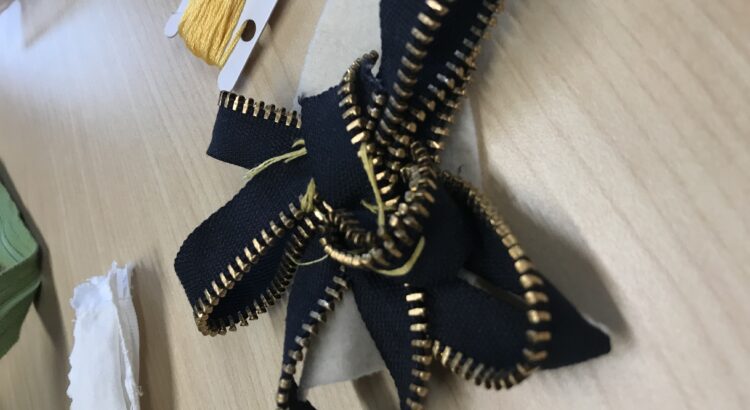As Earth day 2022 rolls in, with it comes the reminder that the Earth is in trouble.
For my first two years at the University of Michigan, I’ve spent my time as a Program in the Environment major learning all about the overconsumption, the CO2 emissions, and the environmental harm that will lead to humanity’s strife and destruction. Since then, I have switched into Stamps School of Art and Design and have been looking for ways to incorporate sustainability into my art.
This past Wednesday, I attended a reuse craft session with the Planet Blue Student Leaders who were in partnership with Scrap Creative Reuse Center. Twenty other people and myself found ourselves in the Graham Sustainability Institute before the brunt of finals to make zipper flowers out of discarded zippers. It brought an hour of peace, fun, and a little bit of stress as I struggled to thread a needle.
The process of the zipper flower making was simple and most people ended up with cool and sophisticated results. Though, my fumbling fingers did struggle a little with this new process of making. The first step of making the flowers was to split the zipper in half. From there you fold one of the sides into a ribbon in the same style as the breast cancer awareness ribbon. Then you sew where the zipper overlaps into a small felt piece and you continue to make these petal shapes from the remaining length of the zipper. You then incorporate the other half of the zipper into the work by following the same steps as the first zipper. This will result in a flower with a messy center. To cover the middle, you can roll some of the excess zipper into the center to create a rose like appearance. You can then hot glue the felt background of the flower to a button to create your own wearable zipper flower button.
While I made my flower, I admired the texture and contrast that the zipper had. The gold metal of the zipper created a harsh but shiny texture, which would be an interesting addition to a mixed medium 2-dimensional artwork or even a sculpture. Creating these flowers opened my eyes to the possibilities of new material to add into my art practice.
I am glad that I attended this event because it was a reminder that as a creative person, I should continue to look to reuse more items in my practice. It also taught me about Scrap in Ann Arbor which collects donated craft materials in order for them to have a second life. Therefore putting less strain on the environment and letting you craft for cheaper.







